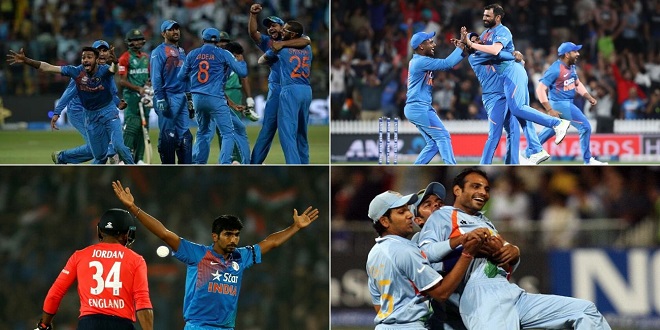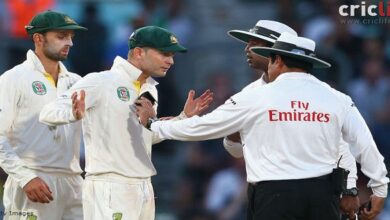
Brian Lara’s Record High Scores
The English cricket team hate the sight of Brian Lara, the great West Indian batsman. Lara has broken the record for the highest-ever number of runs in an individual innings in a test not just once, but twice. Both times, when breaking the record, he was playing against England. Back in 1994, in Antigua, he broke Sir Gary Sober’s 36 year-old record for the highest individual test innings score, when he scored 375 runs. A decade later, at the same ground, against another set of sorry England bowlers, he became the first man to score 400 runs in a test match innings.
As if these magnificent feats weren’t enough, Lara also holds the record for the highest score in a first class cricket match (see Chapter 3 for more on this match format). Just a few weeks after his first destruction of England’s bowlers in Antigua, Lara bludgeoned 501 not out for Warwickshire against Durham at Edgbaston, Birmingham. Sadly few spectators were in the ground to see this stupendous cricketing achievement.
Jim Laker’s Destruction of Australia
During a few cloudy days at the Old Trafford cricket ground in Manchester in 1956, England off-spin bowler Jim Laker achieved cricketing immortality. Virtually single-handedly he won a test match for England against a great Australian team. He took 19 of the 20 Australian wickets to fall during the match at a cost of just 90 runs; by a long chalk the most successful individual bowling performance in any single match in the history of cricket.
And if you consider that the Australian team was chock-full of star players, Laker’s achievement gains even greater magnitude. Some of the Australian players complained that the pitch was treacherous for batting, and helped the spinbowling of Laker, but this doesn’t detract from what was a truly mind-boggling cricketing feat.
Australia’s 16-Test Winning Streak
Between October 1999 and March 2002, Australia won 16 test matches in a row. They beat all-comers to register the longest winning streak in test history. The Australian team, captained by Steve Waugh and containing star players Shane Warne, Glenn McGrath, and Adam Gilchrist didn’t just beat their opponents, but hammered them. Not even poor weather could stop the Australians from carrying away the spoils and confirming their status as one of the greatest cricket teams of all time.
Ian Botham’s Miracle Ashes Triumph
The 1981 test series between England and Australia will always be known as Botham’s Ashes. However, after the second match of the six-match test series, Australia were 1-nil up and Ian Botham, the great England all-rounder, had resigned as team captain. It didn’t look like a miracle was about to happen.
Then in the Third Test at Headingley Botham inspired England to probably the most incredible comeback win of all time, scoring 149 in England’s second innings and taking six wickets in the match.
Kenya Reach the World Cup Semifinal
Kenya’s cricket team isn’t considered good enough to play test cricket, yet in order to encourage the development of the game in the East African nation, they were admitted to the 2003 cricket World Cup. They were supposed to be just making up the numbers. Then, through a great win over Zimbabwe and the underperformance of some established test nations such as England and South Africa, the team of part-time cricketers found themselves in the semifinal of the World Cup. This was the equivalent, if you like, of a non-league football club making it all the way to the semifinals of the FA Cup.
Kenya’s fairy tale though came to an end in the semifinal when they were well beaten by a strong Indian side. Nevertheless, Kenya’s march to the semifinals remains one of sport’s – never mind just cricket’s – greatest ever shocks.
Last word
The performances of Australian batsman Sir Donald Bradman are mentioned many times in this book, mainly because some would argue that they are of a different magnitude to those of any other player who has ever lived. During his test match career, interrupted by the Second World War, ‘the Don’, as he was known, played in 52 test matches, scoring nearly 7,000 runs at an average of 99.94. Just to put this into context the next highest batting average achieved by any batsman in test cricket is around the 60 runs an innings mark. This means that from a purely statistical basis the Don was nearly 50 per cent better than any other batsman in the long history of the game.





